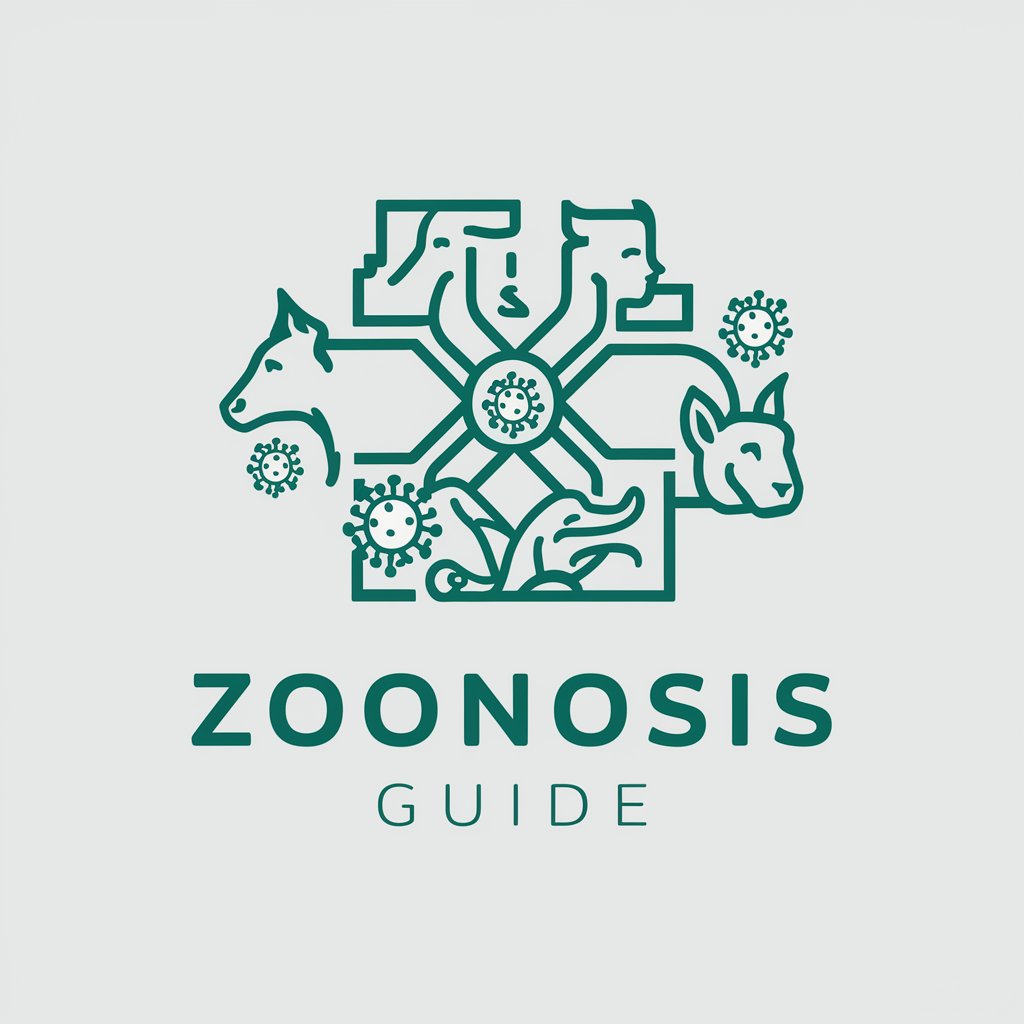Zoonosis - Zoonotic Disease Insights

Welcome to Zoonosis Guide, your source for zoonotic disease information.
Empowering zoonosis understanding through AI
Explain the transmission dynamics of...
Discuss recent research findings on...
Analyze the role of environmental factors in...
What are the historical outbreaks of...
Get Embed Code
Introduction to Zoonosis
Zoonosis, also known as zoonotic diseases, are infections that are transmitted from animals to humans. These diseases can be caused by viruses, bacteria, parasites, or fungi. The transmission can occur in various ways, including direct contact with animals, contact with animal waste, consuming food or water contaminated with animal feces, or through vectors like ticks and mosquitoes. Zoonosis is significant in both medical and veterinary fields because it involves the health of both humans and animals, highlighting the importance of a One Health approach which integrates public health, veterinary medicine, and environmental science. Powered by ChatGPT-4o。

Main Functions of Zoonosis
Education on Transmission Dynamics
Example
Educational modules on the life cycle of the rabies virus and how it spreads from bats to other animals and humans.
Scenario
Used in public health training programs to inform new healthcare workers in rural areas where wildlife interaction is common.
Disease Monitoring and Updates
Example
Real-time updates and tracking of the spread of avian influenza across continents.
Scenario
Helps poultry farmers and health officials in planning quarantine measures and vaccination drives.
Preventive Strategies and Best Practices
Example
Guidelines on safe handling practices for butchers and livestock handlers to prevent brucellosis.
Scenario
Workshops conducted for workers in the meat processing industry to reduce incidence of the disease.
Ideal Users of Zoonosis Services
Healthcare Professionals
Doctors, nurses, and public health workers who need to stay informed about zoonotic diseases for better diagnosis, treatment, and advising patients on prevention.
Veterinarians and Livestock Managers
These professionals benefit from understanding the transmission between animals and humans to manage diseases in livestock and pets effectively.
Researchers and Academics
Individuals conducting studies on infectious diseases can use detailed data and analysis provided by Zoonosis for their research and teaching.

Using Zoonosis
Step 1
Visit yeschat.ai to start using Zoonosis for free without needing to login or subscribe to ChatGPT Plus.
Step 2
Choose a specific zoonotic disease of interest from the list provided or use the search function to find detailed information about a disease.
Step 3
Explore detailed articles and case studies on the transmission, symptoms, prevention, and treatment of the selected disease.
Step 4
Utilize the 'Ask a Question' feature to inquire about specific aspects of zoonotic diseases not immediately visible or covered in the provided materials.
Step 5
For continuous learning, sign up for updates or alerts on new research and outbreaks to stay informed about the latest developments in zoonosis.
Try other advanced and practical GPTs
Idea Midwife
Amplify Creativity with AI

Midlife Wellness Guide
Empowering Your Wellness Journey

Particle Wordsmith
Elevating Science with AI-Powered Editing

AI Science HUB - Particle Physics Adventure Tour
Discover Particles with AI Guidance

Particle Physics Pro
Unveiling the quantum universe

Wave Particle Predictor
Explore Quantum Realities, AI-Enhanced

Cute Canine Companion
Discover, share, and love everything canine.

Cute/ACC 🤍
Blending Imagination with AI Artistry

Futeness🦾- Today's Training Solution⚡
AI-Powered Custom Fitness Solutions

Daily Dose of Cuteness
AI-powered tool for instant cuteness
Cyber Sentinel
Empowering Cyber Resilience with AI

Haiku Master
Inspiring poetry with AI

Frequently Asked Questions about Zoonosis
What are zoonotic diseases?
Zoonotic diseases are infectious diseases that are transmitted between animals and humans. They can be caused by viruses, bacteria, parasites, and fungi, and can be transmitted through direct contact, contaminated food, or vectors like mosquitoes and ticks.
How can zoonotic diseases be prevented?
Prevention strategies include proper hand hygiene, safe food practices, using personal protective equipment when handling animals, and vaccination where available. Public awareness and controlling vectors also play crucial roles in prevention.
What role do environmental factors play in the transmission of zoonotic diseases?
Environmental factors such as deforestation, climate change, and increased human-animal contact can amplify the risk of zoonotic diseases by disrupting natural habitats and increasing the opportunities for viruses to jump species.
Can Zoonosis help identify emerging zoonotic diseases?
Yes, Zoonosis aggregates and analyzes recent data and research, helping users identify patterns and potential emerging threats from zoonotic diseases around the world.
How does Zoonosis use AI to enhance understanding of zoonotic diseases?
Zoonosis employs AI to analyze large volumes of data on zoonotic diseases, synthesizing complex research into accessible information, and providing predictive insights based on current trends and historical data.
